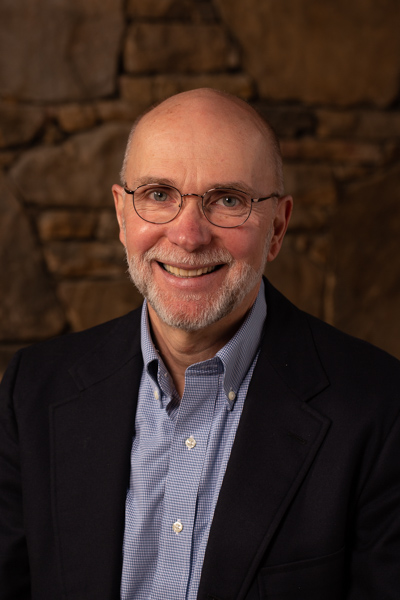2025 Excellence in Natural Resources Extension and Service Award - Sanford S. Smith, Penn State University
Award nomination narrative
 Throughout my life there has been no clear line between service and career. The first indication of this was recorded in a local newspaper photo taken of me at the age of nine. I was leading a “stream clean-up day” with my fifth grade elementary school in 1967, and the newspaper presciently titled the photo caption: “Future Ecologist?” Growing up, I was often drawn to participate and lead in public service opportunities, such as volunteering as a corpsman in a local hospital, leading trash pick-up days on weekends, helping neighbors with their tree and lawn care, and serving on my high school’s drug and alcohol abuse prevention team. Further, as a high school and college student, my main career ambition was to enlist in the Peace Corps to help disadvantaged people in other countries.
Throughout my life there has been no clear line between service and career. The first indication of this was recorded in a local newspaper photo taken of me at the age of nine. I was leading a “stream clean-up day” with my fifth grade elementary school in 1967, and the newspaper presciently titled the photo caption: “Future Ecologist?” Growing up, I was often drawn to participate and lead in public service opportunities, such as volunteering as a corpsman in a local hospital, leading trash pick-up days on weekends, helping neighbors with their tree and lawn care, and serving on my high school’s drug and alcohol abuse prevention team. Further, as a high school and college student, my main career ambition was to enlist in the Peace Corps to help disadvantaged people in other countries.
I joined the Peace Corps upon college graduation in 1980, and headed off to Nepal with my wife, Patty, to collaborate with Nepali farmers involved in cropping systems research and extension programs. This work then led to a contract position with USAID for an additional two years of agricultural extension work in Nepal. It was these experiences that inspired me to return to the US in 1985 to undertake graduate education at Penn State and then seek employment with Penn State Cooperative Extension in 1987. I have enjoyed natural resources extension work, during two separate phases, ever since.
Phase one of my Pennsylvania Extension career was conducted in the northwestern region of the state. Approximately 50% of my time was devoted to planning, implementing, and evaluating educational programs to meet the needs of private woodland owners in Warren, Forest, and Erie counties. I developed a unique clientele for Penn State Extension, and I worked closely with many other state and national agencies. Several times during this period, I was the only person doing this type of work (at the field level) in the state. I worked closely with a 13-member program advisory committee to identify educational needs and to plan programs. My most successful programs centered on timber marketing, woodlot management, forest stewardship, Lyme disease awareness, woodland legal issues, direct mailing of forestry educational literature, wetlands functions and regulations, and chain saw and logging safety.
The remaining 50% of my time was spent planning, implementing, and evaluating the 4-H educational and leadership programs in Warren County. I supervised the 4-H international, natural resources, camping, shooting sports, and interstate exchange programs. The hours were long, and the pay was low, but the high job satisfaction and great people I worked with made it worthwhile. Participation rates in both program areas were high, and extension evaluations were always encouraging. I was also involved as a member and in leadership roles with the Society of American Foresters and National Association of County Agricultural Agents during these years before the Association of Natural Resource Extension Professionals (ANREP) existed. Lastly, the most significant service opportunity that I undertook during these years was a one-year assignment with the Polish American Extension Project. During two consecutive 6-month postings in Poland in 1993, I taught my Polish Extension colleagues how Americans plan, execute, and evaluate Extension activities and mission, and how the Poles might function in similar ways within their new free market economy.
Phase two of my career began in 1997 when I moved to the University Park Campus of Penn State to begin a Ph.D. program and undertake the role of state Extension Specialist in natural resources education for youth and adults. My program responsibilities have included: 1) statewide leadership for 4-H and youth programming in environmental resources, 2) environmental curriculum development and evaluation, 3) training and education of adults who work with youth and natural resources, and 4) adult education in forest stewardship. Over the past 28 years on campus, the balance among these responsibilities and topics shifted as programmatic circumstances and needs changed. Today, only the last two form the core elements of my work. I currently work on a Forestry and Wildlife Extension Team and specialize in peer-to-peer education and video education for forest landowners. My work is recognized for its creativity, innovation, and impact.
The most rewarding areas of service in the second phase of my career include working as the ANREP northeastern regional representative for three years, from 2009-2011, and my three-year term in the President-Elect, President, and Past-President roles in ANREP from 2012-2014. These leadership roles demanded a great deal of time while I led and supported ANREP along with many outstanding colleagues. This exciting work challenged my professional abilities and channeled me into areas of service I never imagined I would undertake. One new area involved being on the Joint Council of Extension Professionals (JCEP), a national Board of the Presidents of all five Extension professional associations, which met regularly with national Extension leaders. Another service area that resulted from my Presidency of ANREP was working with a small group of past ANREP Presidents to incorporate and establish the Natural Resources Extension Education Foundation (NREEF), a non-profit 501c charity that raises funds to support ANREP and similar natural resources Extension work. I served NREEF as we drafted by-laws in 2017-19, as its founding President from 2020-2022, Vice President in 2024, and now President again in 2025. I am committed to helping NREEF get off to a good start and fulfill its promise, now and as a volunteer after my retirement.


 Throughout my life there has been no clear line between service and career. The first indication of this was recorded in a local newspaper photo taken of me at the age of nine. I was leading a “stream clean-up day” with my fifth grade elementary school in 1967, and the newspaper presciently titled the photo caption: “Future Ecologist?” Growing up, I was often drawn to participate and lead in public service opportunities, such as volunteering as a corpsman in a local hospital, leading trash pick-up days on weekends, helping neighbors with their tree and lawn care, and serving on my high school’s drug and alcohol abuse prevention team. Further, as a high school and college student, my main career ambition was to enlist in the Peace Corps to help disadvantaged people in other countries.
Throughout my life there has been no clear line between service and career. The first indication of this was recorded in a local newspaper photo taken of me at the age of nine. I was leading a “stream clean-up day” with my fifth grade elementary school in 1967, and the newspaper presciently titled the photo caption: “Future Ecologist?” Growing up, I was often drawn to participate and lead in public service opportunities, such as volunteering as a corpsman in a local hospital, leading trash pick-up days on weekends, helping neighbors with their tree and lawn care, and serving on my high school’s drug and alcohol abuse prevention team. Further, as a high school and college student, my main career ambition was to enlist in the Peace Corps to help disadvantaged people in other countries.